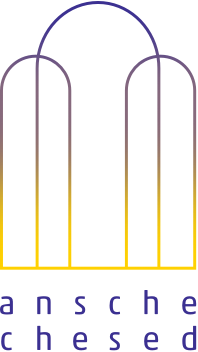When it comes to the three paragraphs of the Shema, one of these things is not like the other. The first two passages come from Deuteronomy and are strikingly similar is diction and theme. The third selection, from Numbers 15:37-41, is an outlier. It does not use the familiar vocabulary of “hearing” the mitzvot or “teaching them to your children.”
The apparent common link that accounts for its inclusion in Shema is that, like the first two, the third selection speaks of our prayer costume. The first two selections command us regarding tefillin, and the third addresses the fringes, or ציצית/tzitzit, on our garments. I will take up the meaning of those tzitzit in coming Tefillah Tuesdays.
Today, one day after the end of the festival of Hanukkah – a holiday of miracles – let’s examine what the Talmudic Sages consider the real reason for reciting this passage: it reminds us of God’s miraculous deliverance from Egyptian slavery. The passage concludes with the divine voice proclaiming: I am the Lord your God, אשר הוצאתי אתכם מארץ מצרים, who took you of the land of Egypt,להיות לכם לא’להים , in order to become your God. We tie tassels to our garments to function like the proverbial “string around your finger.” Seeing tzitzit prompts you to reflect on the exodus, grounding our covenant with God. It is all about remembering the miracle.
Davening the third paragraph of the Shema fulfills the Torah’s command [Deut 16.3] to remember the day you left Egypt, all the days of your life. The Sages debated whether this passage should be recited only during the daytime, when the commandment of tzitzit applies, or also after dark, when it does not. They concluded that we must mention the miracle of the exodus even during night time prayers, which stands as a metaphor for the dark night of exile when redemption seems impossibly distant. (This passage, a citation from the Mishnah, will be more familiar from its inclusion in the Passover Haggadah.)
Why does Judaism require us so strongly to reflect on ancient miracles? To be religious, you need a good imagination. I don’t mean that religion is imaginary or an illusion. I mean that to be a faithful Jew you need powers of creativity and empathy to access profound experiences that may not have happened to you personally, but which can be even more important than the brute facts of what did. By telling the story of past miracles, you enter the narrative of Jewish myth and memory with all your mind, heart and soul. The symbolic fringes of the tallit and the ritualized repetition of the exodus, like the seder itself, helps each of us see ourselves as though we had personally left Egypt.
Today, with Hanukkah just one day past, is a good time to reflect on miracles. R. Moshe b. Nachman, or Ramban [Spain, 1194-1270], my favorite Torah commentator, teaches that remembering rare, epic miracles trains us to notice the miraculous quality of life all around us. “God does not perform miracles in every generation, to punish every scoundrel and heretic,” he notes. Usually we live in miracle-free zones. That’s why we “must make our own perpetual reminders, transmitting them to our children and their children to the end of time.” Judaism helps us pay close attention to those rare and special moments when order breaks through chaos, when justice overwhelms exploitation and kindness conquers cruelty. We call those moments נסים/nissim or miracles. Ramban continues: מן הנסים הגדולים המפורסמים אדם מודה בנסים .הנסתרים “From big and renowned miracles, a person comes to recognize hidden miracles.”
Admittedly, Ramban believes there are no laws of physics, and he uses the phrase “hidden miracles” to mean that each event is a specific act of God, not a natural occurrence. Don’t believe that. It’s not true. But his spiritual insight is still right on: When lighting Hanukkah candles, davening the third section of the Shema or wrapping yourself in tzitzit, try to call to mind those moments when God and holiness were evident and vivid. And let those memories and moments of insightful imagination give us the strength, hope and faith to seek out similar moments in our every day life.





